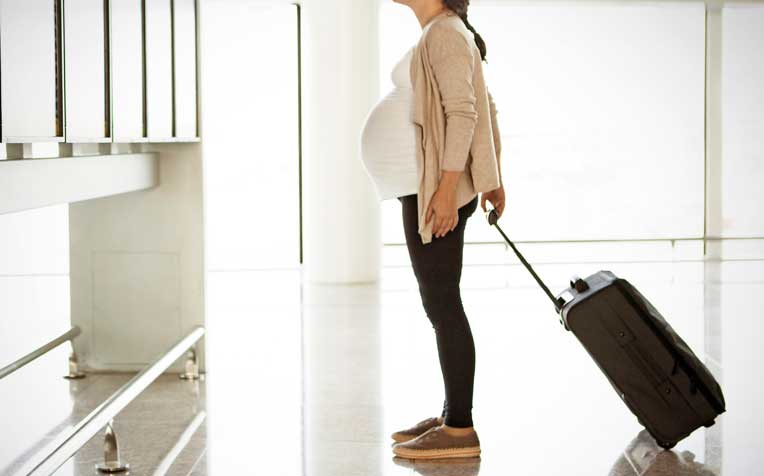Non-English translations are machine-generated; verify independently for
potential
inaccuracies.
Let us help you find what you're looking for.
Popular Searches
Pregnancy: Tips on Travelling Safely

Travelling should be done in the second trimester when the pregnant woman has a lower risk of miscarriage and pre-term delivery.
Tips for traveling when you're pregnant
- Flying is not contraindicated in an uncomplicated pregnancy. You must be well with no abdominal pain or bleeding. Domestic travel is usually permitted until 36 weeks gestation whereas international travel may be curtailed after 32 weeks of pregnancy. This is due to the risk of pre-term delivery.
- Traveling should be done mostly in the second trimester when the pregnant woman is more comfortable and there is a lower risk of miscarriage and pre-term delivery.
- It is important to take precautions for deep vein thrombosis (blood clots in the legs). These include getting a seat with more leg room, interval walking in the aisles or toilet breaks, leg massages or wearing thrombosis deterrent stockings. Prevent dehydration by taking enough fluids orally and avoid alcohol.
- You can consider meningococcal and rabies vaccines if these diseases are endemic in the country you are traveling to. The safety of vaccines for yellow fever, hepatitis A and typhoid has not yet been established in pregnancy.
- Wear your seat belt correctly. The lap belt should go under your belly, across your hips and as high as possible on your thighs. The shoulder strap should go between your breasts and off to the side of your belly. Seat belt straps should fit snugly and never go directly across your tummy. (Figure 15.1)

"The New Art and Science of Pregnancy and Childbirth", a pregnancy book by KK Women's and Children's Hospital (KKH), a member of the SingHealth group.
Ref: X08
Related Articles
Conditions & Treatments
Public Events
31 Jul 2025
Talks
Health Talk: Hypertension Management @ SHP-Marine Parade
Free, no registration required. Please walk in to clinic at specified date and time.
Learn More
01 Aug 2025
Workshop
Health Workshop : Golden Series Part 1 @ SHP-Tampines North
Free, no registration required. Please walk in to clinic at specified date and time.
Learn More
02 Aug 2025
Webinar
Raising a Healthy Breastfed Baby from Birth
Online
•
Free
Learn More
05 Aug 2025
Talks
Health Talk: Advance Care Planning @ SHP-Outram
Free, no registration required. Please walk in to clinic at specified date and time.
Learn More
Get the Health Buddy App
© 2025 SingHealth Group. All Rights Reserved.

















 Get it on Google Play
Get it on Google Play